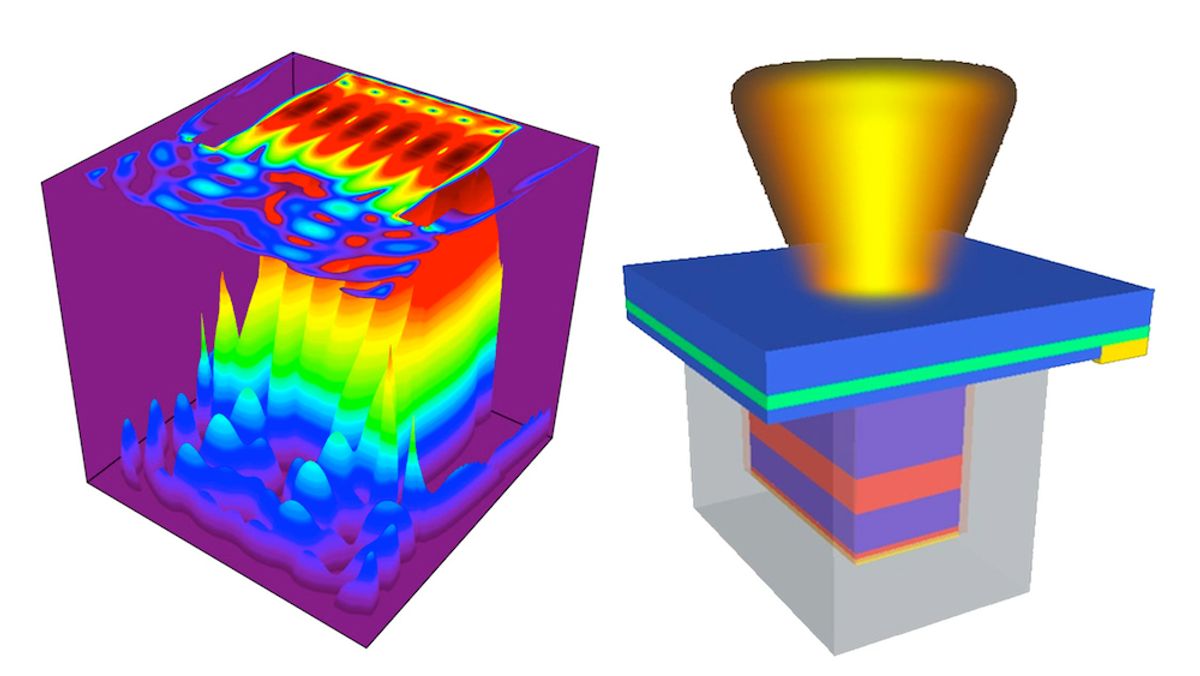Much of the research conducted to date with nanolasers has involved units powered by larger light sources rather than directly from electrical current. While these light-powered nanolasers have been successfully operated at room temperature, the fact that they don't run on electricity makes them impractical for many electronic applications. For instance, in many embedded system designs adding an additional laser light source is just not feasible.
Nanolasers could serve as another key step in keeping Moore’s Law chugging along if they could run continuously at room temperature and be powered by an electric current instead of a beam of light. But heretofore, such lasers were prone to overheating and failure. Now researchers at Arizona State University (ASU) believe they have hit upon a design for an electrically powered nanolaser that has overcome that hurdle.
“In terms of fundamental science, it shows for the first time that metal heating loss is not an insurmountable barrier for room-temperature operation of a metallic cavity nanolaser under electrical injection,” said Ning in a press release. “For a long time, many doubted if such operation is even possible at all.”
In this latest research, Ning and his team employed the same indium phosphide/indium gallium arsenide/indium phosphide (InP/InGaAs/InP) rectangular core and the same silicon nitride (SiN) insulating layer—encapsulated in a silver shell—that they used in an earlier iteration of the device that suffered from the heating problem. But this time, they adjusted the thickness of the SiN layer and refined the fabrication process.
“It is extremely challenging to get everything correct at the nanometer scale. At such a small scale, any fabrication error becomes relatively large, and there are many fabrication steps, each of which is rather complex,” Ning explains in the press release.
Other recent nanolaser designs had already shown that it's possible to operate them at room temperature if you carefully choose the driving laser that powers them. But the ASU team's breakthrough shows the way towards a nanolaser that could be operated with a simple battery rather than another complex laser light source. The impact of this capability could be felt across the entire field of electronics, with nanolasers that speed up computers, broaden Internet bandwidth and serve as light sources for computer-chip-based sensing technologies that are integral to embedded computing.
Image: K. Ding and C.Z. Ning/Arizona State University
Dexter Johnson is a contributing editor at IEEE Spectrum, with a focus on nanotechnology.




